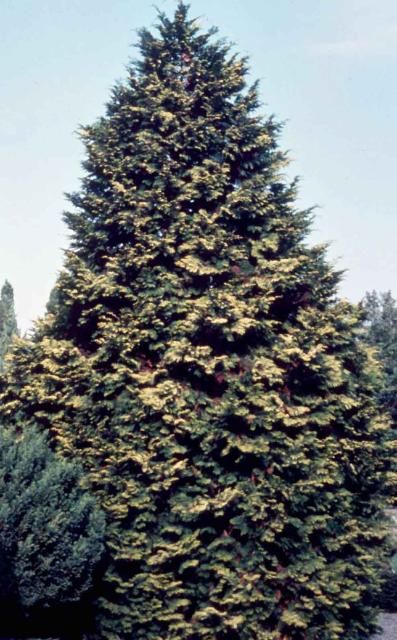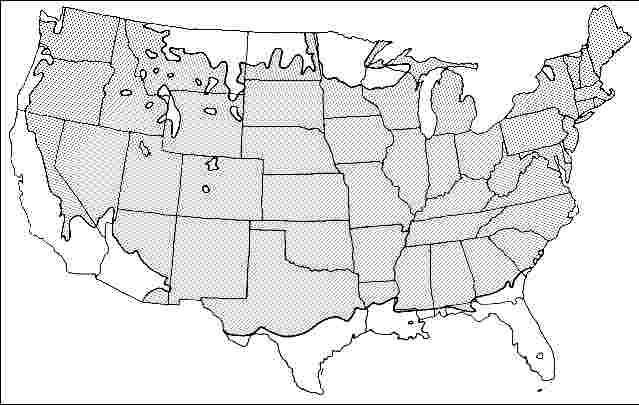Introduction
This broad, sweeping, conical-shaped evergreen has graceful, flattened, fern-like branchlets that gently droop at branch tips. Beautiful, shiny, new, golden-yellow foliage matures to green throughout the interior of the tree, but some random yellow highlights are still obvious in clustered sprays at branch ends, giving the trees a wonderful two-toned effect. Cripps golden hinoki falsecypress reaches 50 to 75 feet in height with a spread of 20 to 30 feet, and has attractive, shredding, reddish-brown bark that peels off in long narrow strips.

Credit: Ed Gilman
General Information
Scientific name: Chamaecyparis obtusa
Pronunciation: kam-eh-SIP-uh-riss ob-TOO-suh
Common name(s): 'Cripps golden' hinoki falsecypress
Family: Cupressaceae
USDA hardiness zones: 4A through 8A (Fig. 2)
Origin: not native to North America
Invasive potential: little invasive potential
Uses: screen; bonsai; specimen
Availability: somewhat available, may have to go out of the region to find the tree

Description
Height: 50 to 75 feet
Spread: 20 to 30 feet
Crown uniformity: symmetrical
Crown shape: spreading, pyramidal
Crown density: dense
Growth rate: moderate
Texture: fine
Foliage
Leaf arrangement: opposite/subopposite
Leaf type: simple
Leaf margin: entire
Leaf shape: scale-like
Leaf venation: none, or difficult to see
Leaf type and persistence: evergreen
Leaf blade length: less than 2 inches
Leaf color: yellow
Fall color: no color change
Fall characteristic: not showy
Flower
Flower color: yellow
Flower characteristics: not showy
Fruit
Fruit shape: round, cone
Fruit length: less than .5 inch
Fruit covering: dry or hard
Fruit color: brown
Fruit characteristics: does not attract wildlife; not showy; fruit/leaves not a litter problem
Trunk and Branches
Trunk/bark/branches: branches droop; showy; typically one trunk; thorns
Pruning requirement: little required
Breakage: resistant
Current year twig color: green, brown
Current year twig thickness: thin
Wood specific gravity: unknown
Culture
Light requirement: full sun, partial sun, or partial shade
Soil tolerances: clay; sand; loam; acidic; well-drained
Drought tolerance: moderate
Aerosol salt tolerance: unknown
Other
Roots: not a problem
Winter interest: no
Outstanding tree: no
Ozone sensitivity: unknown
Verticillium wilt susceptibility: resistant
Pest resistance: free of serious pests and diseases
Use and Management
Cripps golden hinoki falsecypress should be grown in partial sun in the South on moist, well-drained soil, in areas of moderate to high humidity, and preferably where the trees can be protected from harsh winds. Somewhat picky and probably more of a novelty than a staple landscape plant. Coloration is not as pronounced when grown in partial shade.
Propagation is by cuttings.
Pests and Diseases
No pests or diseases are of major concern.